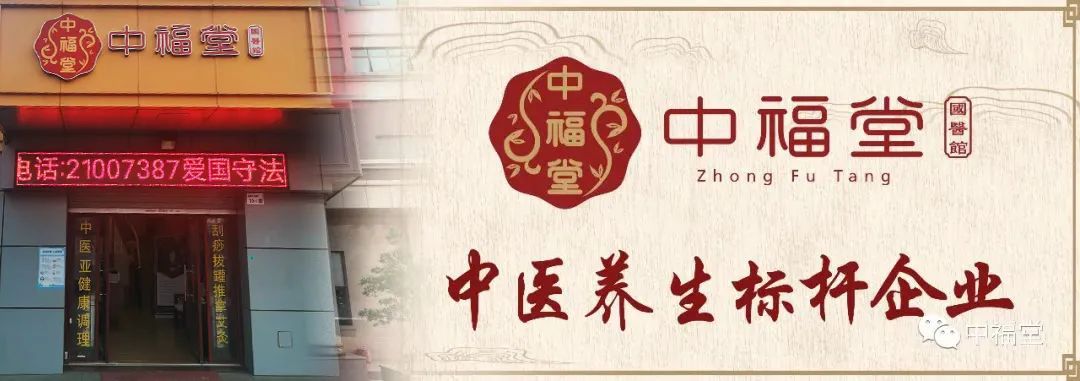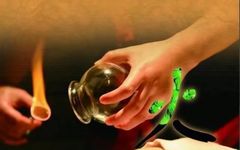Cupping therapy is a method in Traditional Chinese Medicine (TCM) that uses negative pressure to draw on the skin, thereby eliminating dampness from the body. Using cups as tools, it creates negative pressure through methods such as fire or suction, causing local bruising to achieve effects such as promoting circulation, invigorating blood flow, reducing swelling and pain, and dispelling wind and cold.
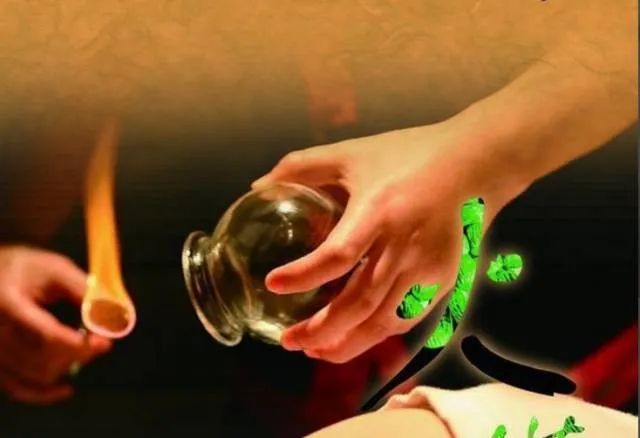
1. Commonly Used Tools: Currently, there are various types of cups used, including bamboo cups, glass cups, and suction cups.
1. Bamboo Cups (1) Materials and Production: Bamboo cups are made from sturdy, undamaged bamboo with a diameter of 3-5 cm, shaped into tubes 6-8 cm or 8-10 cm long, with one end left as a base and the other as the opening. The green skin and inner membrane are scraped off, forming a cylindrical shape like a waist drum, and smoothed with sandpaper to make the opening smooth and even. (2) Advantages: Easy to source, simple to make, lightweight, durable, portable, economical, and not easily breakable; bamboo cups have strong suction power and can be used on areas with more muscle, as well as on thinner skin areas like the wrists, ankles, and back of the hands, showing a clear advantage over small-diameter glass cups. Additionally, bamboo cups can be boiled in medicinal liquid before applying to acupoints or the body surface, improving local blood circulation through negative pressure and enhancing treatment effects through the permeation of the medicinal liquid. (3) Disadvantages: Prone to cracking and leaking; opaque, making it difficult to observe skin reactions inside the cup, thus not suitable for bloodletting cupping. 2. Glass Cups (1) Materials and Production: Glass cups are made from heat-resistant glass, shaped like a sphere with an opening at the bottom and a wide belly, categorized by the diameter of the opening and the size of the cavity. (2) Advantages: Their smooth openings and transparent material allow for easy observation of the skin’s congestion and bruising, helping to determine the duration of cupping; they are currently the most widely used cups in clinical practice, especially suitable for sliding cupping, flash cupping, bloodletting cupping, and needle cupping. (3) Disadvantages: They conduct heat quickly, posing a risk of burns and are easily breakable. 3. Suction Cups (1) Materials and Production: Suction cups are made from organic glass or transparent engineering resin, using a piston at the top to control air extraction, creating negative pressure inside the cup through mechanical suction. (2) Advantages: Suction cups do not require fire or electricity, eliminating safety hazards and preventing burns; they are easy to operate and widely used for personal and family self-care, making them a popular new type of cupping device. (3) Disadvantages: Lack of the warming stimulation effect of fire cups.
2. Indications for Cupping:
Cupping is used for the prevention and treatment of diseases such as colds, neck and shoulder pain, obesity, headaches, heatstroke, acne, stomach pain, and chronic fatigue syndrome.
3. Cupping Method: Use tweezers to hold an alcohol cotton ball, ignite it, and circle it inside the cup before removing it; quickly place the cup over the area to be treated to create suction.
4. Applications of Cupping: (1) Retained Cupping: After suctioning the cup onto the skin, leave it in place for 5-10 minutes; commonly used for wind-cold-damp obstruction and neck and shoulder pain. (2) Sliding Cupping: Apply oil to the cup, suction it, hold the bottom of the cup, and slide it back and forth several times until the skin turns red; used for larger areas with more muscle, such as the back; often used for colds and coughs. (3) Flash Cupping: After suctioning the cup, immediately remove it and repeat several times until the skin turns red; commonly used for facial paralysis. (4) Bloodletting Cupping: First, use a plum blossom needle or three-edged needle to prick the area to draw blood; then apply cupping to draw out 3-5 ml of blood; commonly used for acne and other skin disorders. 3. Cupping Precautions: (1) Operational Contraindications: Avoid burning the cup opening with fire, as this can burn the skin; do not leave the cup on for more than 20 minutes, as this can damage the skin. (2) Site Contraindications: Cupping is not suitable for areas with skin allergies, ulcers, edema, or over the heart and major blood vessels, and should not be performed on the lower back and abdomen of pregnant women.
5. Preventive Health:
1. Cough Cupping Therapy: Main acupoints include Chuanxiao (喘穴), Feishu (肺俞穴); for wind-cold cough, add Fengmen (风门穴); for wind-heat cough, add Dazhui (大椎穴). Use flash cupping, leaving the cup for 8-10 minutes (for younger children, the negative pressure should be lower to avoid skin damage); children can also use flash cupping once daily for 3-5 sessions as one treatment course. 2. Neck and Shoulder Syndrome Cupping Therapy: The patient lies face down, and the doctor applies an appropriate amount of oil to the skin over the sternocleidomastoid and upper trapezius muscles, then suctions the cup onto the skin and moves it back and forth over the affected area until the skin shows purple-red or dark purple spots. After sliding cupping, use a three-edged needle to prick the spots, then use a medium-sized fire cup for flash cupping on the same area, leaving it for about 10 minutes, with each spot drawing out about 2-3 ml of blood, once every other day for 5 sessions as one treatment course. 3. Knee Arthritis Cupping Therapy: Medicinal cupping can be used: pack 15 grams each of Qianghuo (羌活), Duhuo (独活), Fangfeng (防风), Mu gua (木瓜), Sangzhi (桑枝), Chuanxuduan (川断), Niuxi (牛膝), Duzhong (杜仲), Aiye (艾叶), Jixueteng (鸡血藤), Chuanxiong (川芎), and Danggui (当归) into a cloth bag, boil in water for 5 minutes, then place a small bamboo cup into the medicinal liquid for 10 minutes. When using, pick up the bamboo cup with tweezers and tap it on the inner and outer knee points and the He Ding (鹤顶穴) for 15 minutes each time, once every other day for 10 sessions as one treatment course.
6. Effects of Cupping:
1. Cupping can help expel dampness and cold from the body through the skin, thus eliminating pathogenic factors and revitalizing the spirit.
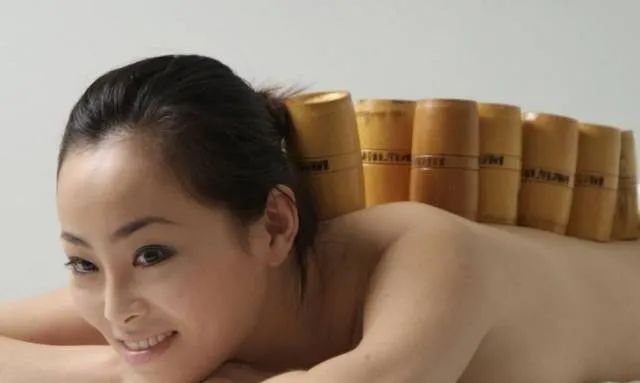
2. Since the meridians, acupoints, and internal organs are interconnected, the external suction stimulates the acupoints on the body surface, which in turn regulates the internal organs through the meridians, promoting smooth circulation of qi and blood, and strengthening the body.
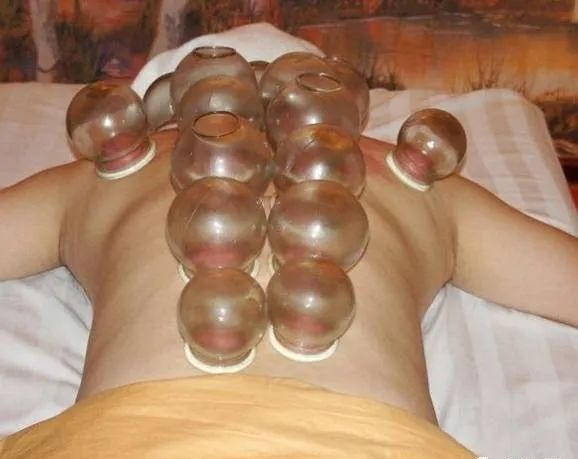
3. Cupping also has certain effects on local tissue injuries and lumbar disc herniation; regular cupping can alleviate pain and symptoms.

4. Nowadays, many beauty and weight loss establishments are also researching and promoting methods of weight loss through cupping.
7. Disadvantages of Cupping:
1. The timing and intervals of cupping must be well managed; some people enjoy the process too much and end up cupping too frequently, resulting in severe skin damage and infections, as well as significant bruising.
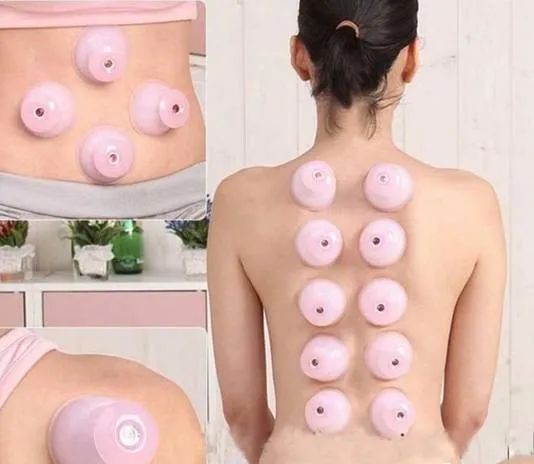
2. For patients with inflammation or bleeding disorders, cupping may not only be unhelpful but could also lead to more severe destructive consequences.
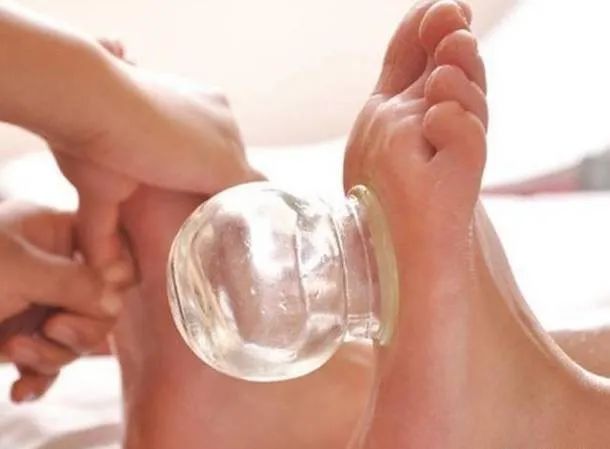
3. After cupping, it is important to avoid bathing or exposure to cold for a certain period; otherwise, even healthy individuals may develop illnesses, and existing conditions may worsen.
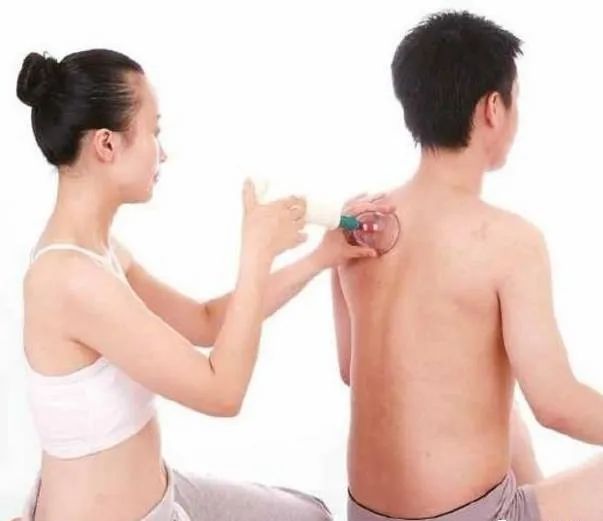
8. Skin Color Assessment After Cupping:
1. If there are no cup marks or they disappear immediately, the skin returns to normal, indicating that the body is generally healthy or the pathogenic factors are mild.
2. Dark purple cup marks generally indicate insufficient blood supply and blood stasis.
3. Purple cup marks with patches generally indicate cold coagulation and blood stasis.
4. Cup marks with scattered purple spots of varying shades indicate qi stagnation and blood stasis.
5. Bright red cup marks generally indicate yin deficiency, qi and blood deficiency, or yin deficiency with excess heat.
6. Dark red cup marks indicate high blood lipids and the presence of heat pathogens.
7. Grayish-white cup marks that feel cool to the touch generally indicate deficiency-cold or damp pathogens.
8. Blue cup marks indicate cold syndrome.
9. Large areas of black-purple marks after sliding cupping indicate exposure to wind-cold.
10. Cup marks with skin texture or slight itching indicate wind pathogens or dampness.
11. If there is moisture on the inner wall of the cup, it indicates dampness in that area.
12. If blisters appear on the cup marks, it indicates heavy dampness in the body; if the blisters contain blood, it is a reaction to damp-heat toxins.
After cupping, the purple marks on the skin generally disappear within two weeks. Cupping must be performed according to the symptoms to achieve therapeutic effects; below are common cupping therapies for various diseases.
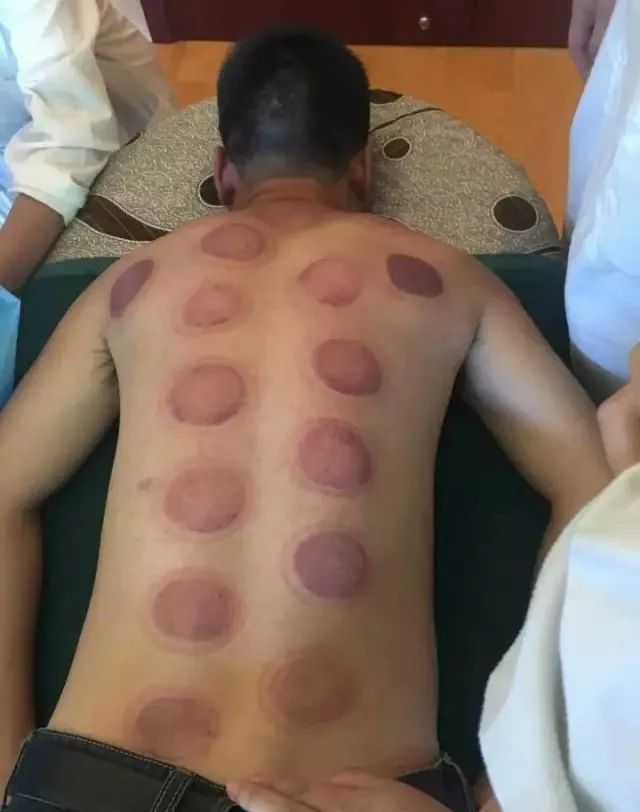
9. Contraindications for Cupping: Pregnant women, those on their menstrual period, individuals with emaciated muscles, children under 6 years old, elderly over 70, individuals with mental illness, edema, heart failure, active pulmonary tuberculosis, acute infectious diseases, bleeding disorders, and areas over the eyes, ears, nipples, heartbeats, major blood vessels, uneven bone surfaces, and areas with excessive hair should not undergo cupping therapy.
10. Cupping Precautions:
1. The body position must be appropriate; if there are wrinkles, looseness, scars, or uneven skin in the area, the fire cup may easily fall off. 2. Choose cups of appropriate size based on different areas. 3. When using needle cups, prevent muscle contraction to avoid bending the needle and ensure the needle does not penetrate too deeply, which could cause injury. Acupoints on the chest and back should be used with caution. 4. When using bloodletting cupping, the area of skin pricked should be equal to or slightly larger than the diameter of the cup. The amount of blood drawn should be appropriate, with a total volume not exceeding 10 ml for adults. 5. When using multiple cups, the distance between them should not be too close; otherwise, the skin may be pulled by the cups, causing pain, and the cups may not adhere properly due to mutual displacement. 6. When performing sliding cupping, do not push or pull over bony protrusions to avoid skin damage or cup leakage. 7. When removing the cup, use a gentle technique; press the skin around the cup to release the air before removing it; do not pull hard or twist. 8. If there is bleeding from the needle hole after cupping, use a dry cotton ball to wipe it away. Generally, local redness or purplish discoloration (bruising) is normal and will subside on its own. If there is severe bruising, do not perform cupping again in the same area. If the cup is left on for too long, blisters may form; small blisters do not require treatment, but care should be taken to avoid breaking them to prevent infection; larger blisters can be punctured with a sterile needle to release the fluid, then disinfected and covered with a sterile dressing to prevent infection.
11. Cupping Knowledge:
Several aspects should be noted during cupping:
1. Avoid exposure to wind during cupping and keep warm.
2. Observe changes in the skin under the cup.
3. Methods:
(1) The face should generally not be cupped, as the rich capillaries can leave purple marks that affect appearance and may even cause burns leading to disfigurement.
(2) The chest should not retain cups.
(3) The abdomen should use flash cupping.
(4) The neck, shoulders, and upper limbs can use retained cupping as needed.
(5) The lower back, buttocks, and lower limbs should use retained cupping.
4. Do not take a cold shower on the same day after cupping, and it is best to avoid air conditioning.
The following conditions are not suitable for cupping:
(1) Individuals with high fever, convulsions, or spasms should not undergo cupping. For epilepsy patients, it should only be used during intervals.
(2) Patients with bleeding tendencies should use caution, and bloodletting cupping should be avoided to prevent excessive bleeding.
(3) Patients with severe emphysema should not undergo negative pressure cupping on the back and chest. Individuals with heart failure or weak constitutions should not undergo cupping therapy.
(4) Patients with fractures should not undergo cupping until fully healed to avoid affecting bone alignment and healing. Acute joint sprains with torn ligaments should not be cupped.
(5) Cupping should not be performed on areas with ulcers or broken skin. During the period of redness, swelling, heat, and pain in the area of an unripe sore, cupping should not be performed on the lesion. Cupping is contraindicated for facial boils to avoid severe consequences. Unexplained lumps in the area should also not be cupped indiscriminately.
(6) Pregnant women should not undergo cupping on the lower back and abdomen.
Individuals with heart disease, blood disorders, skin diseases, skin injuries, mental illness or neurosis, pulmonary tuberculosis, various infectious diseases, fractures, extreme weakness, excessive fatigue, pregnant women, women during menstruation, overeating, extreme hunger, extreme thirst, or intoxication should use cupping therapy with caution or avoid it altogether.
If blisters occur after cupping, it may be due to prolonged cupping time; for patients with rheumatism or edema, or those affected by wind-cold, this is a normal phenomenon.
If blisters occur, they can be disinfected with regular iodine or alcohol; small blisters do not require treatment and will be absorbed naturally. Larger blisters can be punctured with a sterile needle to release the fluid, then disinfected.
After cupping, it is best to avoid vigorous exercise.
Cupping accelerates local blood circulation and stimulates the circulation of qi and blood; after the procedure, it is easy for wind pathogens to enter the body! Just like after a general massage, there should be a follow-up action to close the opened capillaries to prevent cold air from entering! Vigorous exercise can easily open capillaries, allowing cold air to enter!
Therefore, it is recommended to rest for half an hour after cupping.
Do not drink alcohol within two to three hours after cupping.
The main effect of cupping is to regulate qi and blood; alcohol entering the bloodstream can paralyze the vascular motor center, respiratory center, and peripheral blood vessels, leading to a certain degree of blood pressure drop, which conflicts with the principles of cupping therapy.
12. Common Treatment Methods:
1. Cupping therapy effectively treats heel pain.
Symptoms: Heel pain, with a fixed pain point, may be accompanied by a feeling of swelling or tightness in the sole of the foot. Pain is severe when standing or walking after getting out of bed in the morning, and worsens in cold conditions.
Acupoints: Local pain points, Ah Shi points.
Method: Flash cupping on the painful area, repeating 5 times.
Treatment acupoints and areas:
Main acupoints: Jianyu (肩隅), Jianliao (肩寮), Jianzhen (肩贞), and tender points.
Additional acupoints: Quchi (曲池), Waiguan (外关), Zhongzhu (中渚), and Binao (臂臑).
2. Cupping therapy effectively addresses shoulder and neck pain.
Causes: Mainly due to invasion of wind, cold, and dampness, or improper posture and long-term strain, leading to stagnation of qi and blood and malnourishment of muscles.
Acupoints: Jianjing (肩井), Fengchi (风池), Dazhui (大椎), Jianyu (肩隅), Jianwaiyu (肩外俞), and Ah Shi points.
Method: Retained cupping. Select the above acupoints and retain the cups for 10-15 minutes, once daily for seven days as one treatment course.
3. Cupping therapy can also be used for optic nerve atrophy.
Optic nerve atrophy—liver and kidney yin deficiency type.
Symptoms: Dryness in the eyes, blurred vision, gradual vision loss, narrowed visual field, and even blindness, accompanied by dizziness, tinnitus, lower back and knee weakness, dry throat, and flushed cheeks.
Acupoints: Ganyu (肝俞), Guangming (光明), and Sanyinjiao (三阴交).
Method: Retain the cups on the upper acupoints for 10-15 minutes, once daily.
4. Cupping effectively treats lumbar disc herniation.
Symptoms: Low back pain with limited mobility; in severe cases, it can affect turning over and sitting. Symptoms worsen with rest, coughing, sneezing, or during bowel movements, and can affect lower limb movement.
Acupoints: Shenshu (肾俞), Dachangshu (大肠俞), Bailiao (八髎), Huantiao (环跳), Jiuwei (居髎), Chengfu (承扶), Weizhong (委中), Chengshan (承山), and Ah Shi points.
Method: Retained cupping. Select the upper acupoints and retain the cups for 15-20 minutes, once daily for 10 sessions. Alternatively, use sliding cupping along the painful area, moving up and down over the tender points until the skin turns red.
Cupping therapy has certain efficacy for the symptoms of this condition and can be combined with massage, acupuncture, and physiotherapy for comprehensive treatment.
5. Cupping therapy effectively addresses shoulder periarthritis.
Shoulder periarthritis—muscle and tendon dysfunction type.
Symptoms: Chronic shoulder pain, muscle atrophy, inability to raise the arm above the head, and difficulty rotating the arm behind the back, with soreness and fatigue in the area, and sensitivity to cold, with pain alleviated by warmth.
Acupoints: Jianyu (肩隅), Tianzong (天宗), Dazhu (大杼), Quchi (曲池), Jianjing (肩井), Jianzhen (肩贞), Waiguan (外关), and Binao (臂臑).
Method: Retained cupping. Retain the cups on the above areas for 10-15 minutes, once every other day.
6. Cupping therapy for rheumatoid arthritis.
Rheumatoid arthritis—wind-cold-damp obstruction type.
Symptoms: Joint pain and soreness, difficulty in flexion and extension, or swelling without redness, local sensitivity to cold, worsening with cold exposure, alleviated by warmth, pale complexion, and sensitivity to cold.
Acupoints: ① Dazhui (大椎), Qihai (气海);
② Jianyu (肩隅), Quchi (曲池), Waiguan (外关);
③ Huantiao (环跳), Yanglingquan (阳陵泉), Kunlun (昆仑);
④ Shenzhu (身柱), Yaoyangguan (腰阳关), and Ah Shi points.
Method:
Retain the cups on the above acupoints for 15-20 minutes.
7. Cupping therapy for sciatica.
Sciatica—heavy cold-damp type.
Symptoms: Severe pain in the lower back and legs, limited mobility, worsening pain in cold and rainy weather, a feeling of heaviness in the body, and reduced sensitivity in the skin of the lower leg and foot, with a preference for warmth and aversion to cold.
Acupoints: Mingmen (命门), Yaoyangguan (腰阳关), Huantiao (环跳), Shenshu (肾俞), and Guanyuan (关元俞).
Method: Retained cupping. Retain the cups on the above acupoints for 15-20 minutes, once daily or every other day for 7 days as one treatment course.
8. Cupping therapy effectively treats shoulder periarthritis.
Shoulder periarthritis—muscle and tendon dysfunction type.
Symptoms: Chronic shoulder pain, muscle atrophy, inability to raise the arm above the head, and difficulty rotating the arm behind the back, with soreness and fatigue in the area, and sensitivity to cold, with pain alleviated by warmth.
Acupoints: Jianyu (肩隅), Tianzong (天宗), Dazhu (大杼), Quchi (曲池), Jianjing (肩井), Jianzhen (肩贞), Waiguan (外关), and Binao (臂臑).
Method: Retained cupping. Retain the cups on the above areas for 10-15 minutes, once every other day.
9. Cupping therapy for lumbar muscle strain.
Lumbar muscle strain—kidney deficiency type.
Symptoms: Dull, persistent low back pain, relieved by pressure and massage, weakness in the lower back and knees, worsening with fatigue, and alleviated by rest.
Acupoints: Shenshu (肾俞), Qihai (气海), Sanyinjiao (三阴交), and Ah Shi points.
Method: Retained cupping. Retain the cups on the above acupoints for 15-20 minutes.
10. Cupping therapy for acute tonsillitis.
Acute tonsillitis—heat toxin excess type.
Symptoms: High fever and thirst, throat pain radiating to the ears, difficulty swallowing, and significant swelling of the tonsils with yellow-white pus points, foul breath, and constipation.
Acupoints: Dazhui (大椎), Quchi (曲池), Feishu (肺俞), and Zhibo (支泡).
Method: Retain the cups on the above acupoints for 10-15 minutes, once daily.
11. Cupping is beneficial for strengthening the body.
Acupoints:
Zhongwan (中脘), Gaohuang (膏肓), Mingmen (命门), Zusanli (足三里), Shousanli (手三里), Neiguan (内关), Laogong (劳宫), Yongquan (涌泉), and Guanyuan (关元).
Method: Retained cupping. Select 3-5 of the above acupoints and retain the cups for 10-15 minutes, once every other day for one month as one treatment course. Massage or acupressure on the above acupoints can also achieve the effect of strengthening the body.
12. Cupping for weight loss.
(1) For those with excess yang symptoms, characterized by obesity, increased appetite, and a tendency to eat excessively, with a red tongue and slippery pulse.
Treatment: Clear the stomach and drain fire.
Acupoints: Jidian (饥点), Feishu (胃俞), and other points such as Yangchi (阳池) and Sanjiao (三焦俞).
Method: For weight loss, it is advisable to combine cupping with auricular pressure. Auricular pressure on the Jidian point (the midpoint in front of the ear, below the external nasal point) can help reduce appetite and is an effective point for weight loss. Retain the cup on Feishu, as the distribution of nutrients throughout the body relies on the lung’s function of qi. Selecting Yangchi, Sanjiao, and Weishu points is closely related to the digestive and absorptive functions of the spleen and stomach, and these key points can harmonize reactions such as hunger that may arise from other weight loss methods.
(2) For those with phlegm-damp obstruction symptoms, characterized by obesity or accompanied by drowsiness, fatigue, poor appetite, a bland taste in the mouth, scanty menstruation or amenorrhea in women, and impotence in men, with a swollen tongue and a pulse that is either deep or slippery.
Cupping treatment: Transform dampness and resolve phlegm.
Acupoints: Auricular points for endocrine and adrenal glands, and body points such as Sanjiao (三焦俞) and Weishu (脾俞).
Method: Use auricular pressure on the endocrine and adrenal points, which have a regulatory effect on the central nervous system’s endocrine function. Body points can be combined with sliding cupping, applied for 15-20 minutes, to strengthen the spleen, eliminate dampness, and resolve phlegm.
